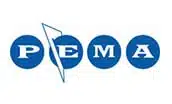Screw Feeder for Metering Glass Frit
General Description
Fritted glass is a type of architectural glass that is porous enough for gas or liquid to pass through and is produced by sintering glass and ceramic particles into a solid, porous body. Often used in laboratory applications, fritted glass is created in a glass furnace. The glass acts as a filter for gasses or liquids. The medium passes through the glass filter which blocks solid particles and other contaminants.
Fritted glass is also used in creative ways. Ceramic particles are fused onto the surface of the glass, creating a decorative pattern, or reducing the amount of light that can pass through. The frit can also be made with specific materials that give it a particular color or hue. Blue frit, a compound made from quartz, lime, and copper, for example, has been used since 2900 BC.
Flexicon Corporation needed an extremely robust method to meter fritted glass from a filter receiver of a pneumatic conveying system. Fritted glass is received in bulk bags and conveyed with a dilute phase pneumatic conveying line into the filter receiver. The KWS screw feeder accurately meters glass frit from the filter receiver into the manufacturing process.
Screw Feeder Meters Fritted Glass from Filter Receiver to Processing
Design Parameters
- Product Type: Glass frit
- Material Density: 90 Lbs. per Cubic Foot
- Conveyor System Capacity: 17 Cubic feet per Hour
- Duty: Intermittent
- Design Temperature: 1,000-Degrees F
KWS Advantages
Over several years KWS and Flexicon have formed a strong partnership in the bulk material handling industry. When in need of robust designs and high-quality rigid screw conveyors and screw feeders, Flexicon turns to KWS. The Flexicon/KWS relationship has yielded substantial benefits in projects for which Flexicon acts as a full system supplier. KWS implements customer-specific enhanced design features to ensure high efficiency and sustained reliability that Flexicon and its customers have come to expect.
KWS Special Features
The screw feeder is designed with two inlets. The first inlet receives a “dribble” feed from a dust collection system and the intermediate inlet is flood-loaded by the filter receiver. To prevent flooding of the glass frit past the intermediate inlet in either direction, KWS incorporated feeder shrouds on both sides of the intermediate inlet.
The screw feeder was designed with a single-piece variable pitch screw to evenly meter bulk materials from the filter receiver. The screw was designed to span the entire length without the use of an intermediate support/hanger bearing. The Schedule 160 centerpipe was oversized to minimize screw deflection at the elevated temperature and provide a thicker pipe wall for longer wear life.
KWS utilized a slider base pedestal style trough end on the tail end to protect the end bearing from contamination and allow for thermal expansion. The KWS slider base pedestal is a compact design that houses the bearing, seal, and shaft. The KWS slider base trough end allows travel axially along the length of the screw feeder. It uses a slider ridge, to which the pillow block bearing is mounted, to ensure proper alignment as thermal expansion occurs.
A high-temperature Siemens Milltronics speed-sensing probe and alarm controller were supplied by KWS. The speed sensor detects underspeed, overspeed, or zero speed and alerts operators to any malfunctions protecting the screw feeder from catastrophic damage.
Testimonial
"KWS was extremely helpful throughout the entire process and are without question our supplier of choice for rigid screw conveyors and screw feeders."
Steve Magditch, Regional Sales Manager – Flexicon Corporation
Two Inlets Introduce Fritted Glass to Screw Feeder
Variable Pitch Flights Accurately Meter Abrasive Fritted Glass
Slider Base Trough End Allows Bearing to Move Axially with Thermal Expansion and Contraction
Milltronics Speed Sensor Detects Underspeed, Overspeed, or Zero Speed
Feeder Shrouds are Used on Both Sides of Inlets to Control Flow






